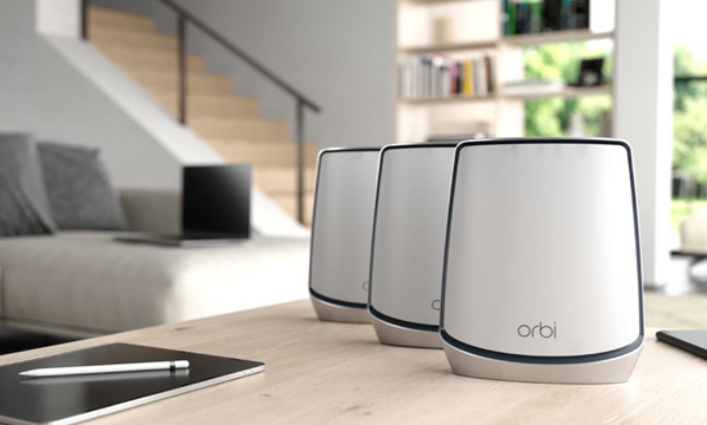Mesh system versus extenders - what's right for you?
No matter how fast your broadband service is, when it comes to having reliable internet in the home or office it’s critical to get your wifi set up right.
4 mins average read time

At Chorus we work hard to ensure our fibre network delivers congestion free, fast broadband for Kiwis. The reality though is that the actual speed and performance of the broadband service you get is dependent on a whole range of factors; including your wifi or in-house network.
And properties that are particularly vulnerable to wifi issues are ones that are spacious or have a complicated layout. But don’t worry if you fall in this category, a remedy is available in the form of a mesh network system to boost your wifi coverage and improve your chances of seamless internet regardless of where you are in the home, bach or office.
Mesh systems usually consist of one device that is designated as the main router that connects directly to your modem. From there, nodes (also referred to as satellite modules) are placed throughout your space to pass on your wifi signal. (Note, generally each node will require an electrical outlet to power it).
For most properties one or two nodes should do the trick but you need to buy more and they will integrate with each other to spread your wifi efficiently across more areas. In a nutshell the nodes farthest from the router deliver a strong wifi signal as they are talking to other nodes and not relying on one-on-one connectivity with your router.
As you start your research you will find that wireless range extenders are cheaper but as with many instances in life - you get what you pay for and you will likely get a better result with a mesh system. Coverage is going to vary from brand to brand so do your homework and don’t be afraid to rely on sales representatives for advice.
Things like flooring, certain electrical appliances, walls, cement and more can affect your wifi. Start small with one or two nodes and go from there.
Some of the more common systems are Google Nest, Netgear Orbi and TP Link Deco which cost anywhere from $380 to $800 depending on the number of nodes you get initially.
You can always buy more later to supplement the ones you have and connect them pretty effortlessly.
Most systems will require you to download an app before you start the installation process and to register with it. Once you have done that, the app should offer you a step-by-step process to get your mesh router up and running so just follow the instructions.
Remember that your main node needs to be placed close to your router and most of the time, connected with the LAN cable. Also, be mindful of where you place your router. It should be out in the open and not hidden away in a cupboard.
You might want to unplug the modem or router you’re connecting to the mesh system which will allow it to reset and connect to the IP address. The app will then search for your primary/first node and will let you know when it has found it. This is when you will have to name your network and come up with a unique password. Here is when things get a little tricky because each model can behave differently.
As a general guide, set your second made roughly halfway between the router and your dead zone. Try your best to keep each mode under 10 meters from each other and place them off of the floor and next to an outlet. Most mesh system’s app will have the capability to do a signal test. If the signal is too weak - chances are, you have placed them too far apart. Move them closer and then give the test another go to see if that improves things.
Once you’re set up and created a new wireless network in your home, using your mesh system it’s critical to make sure all the devices being used are connected to the new network. Otherwise, you may get some devices competing with the signal from your modem to the one coming from your mesh system which leads to slow internet all round.
Mesh systems are flexible in the sense that you can quickly and easily change the size of your network of nodes depending on your bespoke needs.
Each node in your network receives and translates information which helps keep the network ticking over even if a problem occurs.
Setting up mesh is really straight forward, especially if you use a repeater device and an app to guide you along.
Faster broadband is a huge plus point for mesh systems as they lose less speed whilst spreading your connection further. This means your whole home can enjoy high-performance broadband.
Setting up a mesh network is a great solution to weak wifi! Especially if you have a lot of dead zones in your home or office, this solution can solve your problems and make working from home or using multiple devices much easier.

No matter how fast your broadband service is, when it comes to having reliable internet in the home or office it’s critical to get your wifi set up right.

A slow internet experience can be incredibly frustrating. Buffering wheels at the cliffhanger of the movie you're streaming, glitch face while you're in an important Zoom meeting or even documents that take forever to open can cause headaches. Does it have you wondering why your broadband is lagging?

The prospect of moving house is exciting. It's often the promise of a fresh start, a new nest to make your own. Do you know how to set up broadband in your new house? Here's all you need to know!


